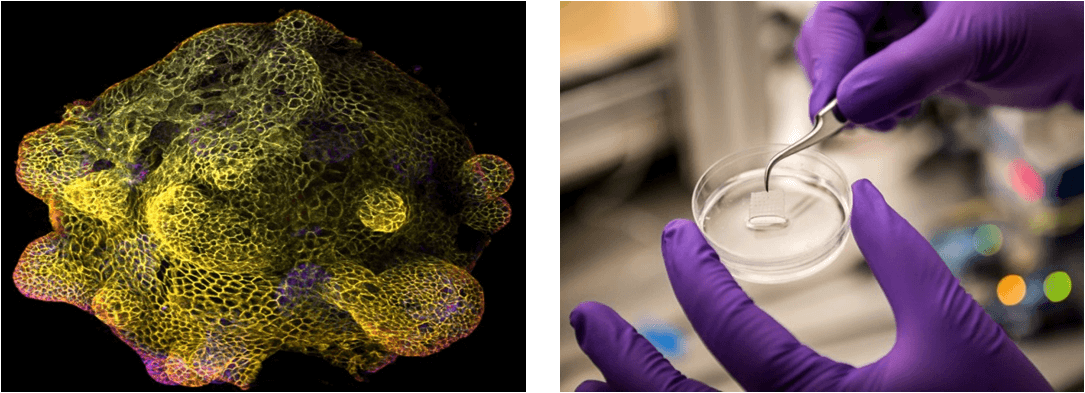Discussion on The Limitation and Development of Patient-derived Tumor Xenograft Model
Background for PDX models In the discovery and development of cancer drugs, new drugs must be pre-tested for various aspects of the drug in the cancer model from discovery to the preparation and then to clinical trials, which requires the use of a cancer model. The early model of cancer was the NCI-60 cell line, which has deepened the understanding of cancer after 25 years of research. However, NCI-60 cells have shown a large difference with the original NCI-60 cells after many generations and are no longer suitable for cancer models. Finally, NCI-60 cell line was replaced by human-derived tumor tissue xenograft model, that is the PDX model. Brief Introduction to Patient-derived Tumor Xenograft Model Patient-derived tumor xenografts (PDX) are created when cancerous tissue from a patient's primary tumor is implanted directly into an immunodeficient mouse. PDX models are providing solutions to the challenges that researchers face in cancer drug research such as positive tumor responses in mouse models but not translating over when the study is implemented in humans. As a result, PDX cancer models are becoming popular models in cancer drug research. At present, PDX model is widely used in in vivo experiments of anti-cancer drugs, including pharmacodynamic evaluation of antineoplastic drugs, screening of novel anti-cancer drugs, combination drug testing and research on drug resistance of tumors, which have great contributions to cancer research. The Limitation and Development of PDX models On October 9, 2017, the Todd Golub team disputed the status of the PDX model in oncology treatment and the results are published in Nature Genetics. Researchers tracked 1110 PDX models covering 24 types of cancers, transferring tumor tissue from one mouse to the next and collecting the relevant genetic data. The results show that there is some variation in the data of mice compared to the genetic data of the tumor cells in the human body as the tumor tissue is delivered in mice. For instance, glioblastoma chromosome 7 copy number gains in the human body, whereas it decreases in mice. The researchers suppose that this change may be due to the different response of the PDX model to cancer drugs. In addition, the researchers also tested the PDX model for other cancers, of which similar results were found in 15% of Pbyodels. In fact, the results can be explained by the following two aspects: . Different tumor environment The reason for choosing PDX model but not in vitro cultured cell line is that the tumor environment is different. While transplanting a patient's tumor tissue into a mouse may affect the evolution of the cell and then alter the gene for the cancer cell in some way. CAR-T therapy has a significant effect in hematological tumors, but the research progress in solid tumors is slow, one of the reasons is that The solid tumor has a more complicated microenvironment. . The application of Immunodeficient Mice Immunodeficient mice are selected for establishing the PDX model, which aims to reduce rejection and improve graft survival, but meanwhile, the immune microenvironment in mice was absentation, and finally lead to the response to the drugs was greatly different. However, this does not mean that PDX model is not suitable as a cancer model, instead, it just proves that PDX model is not a panacea. David Sidransky, an oncologist at Johns Hopkins School of Medicine in Baltimore, established PDX models of 92 patients and conducted a dosing study, the results published in August showed that the correlation is up to 87% between the response to drugs of patients and the associated PDX models. The truth of cancer determines the difference between the patients. For patients with the same type of cancer, a kind of drug is effective for patient A, but not necessarily effective in patient B. The PDX model is still indispensable for the treatment of individuals with heterogeneous or rare cancers. It can predict the effect of drugs on the tumor but also provide different treatments for different patients. Meanwhile, PDX model will also help individualized treatment, finally achieving the "private customization" in a real sense. ‘No model is perfect, but many are useful’, researchers have known that PDX models have limitations, moreover, building PDX models typically takes months to complete, which is not good news for patients in need of medication, not to mention the low modulus of PDX models. However, researchers still tried every possible method to improve the PDX model, such as transplanting the tumor tissue directly to the corresponding site rather than subcutaneously, treating the mice humanely, and even constructing a transgenic mouse model that simulates a complete human immunity. Researchers believe that PDX models will play a more important role in the treatment of types of cancer, it will a big improvement, but not a hurdle. We will also look forward to the further development and application. Related products PDX Model PDO Model


Your email address will not be published. Required fields are marked *